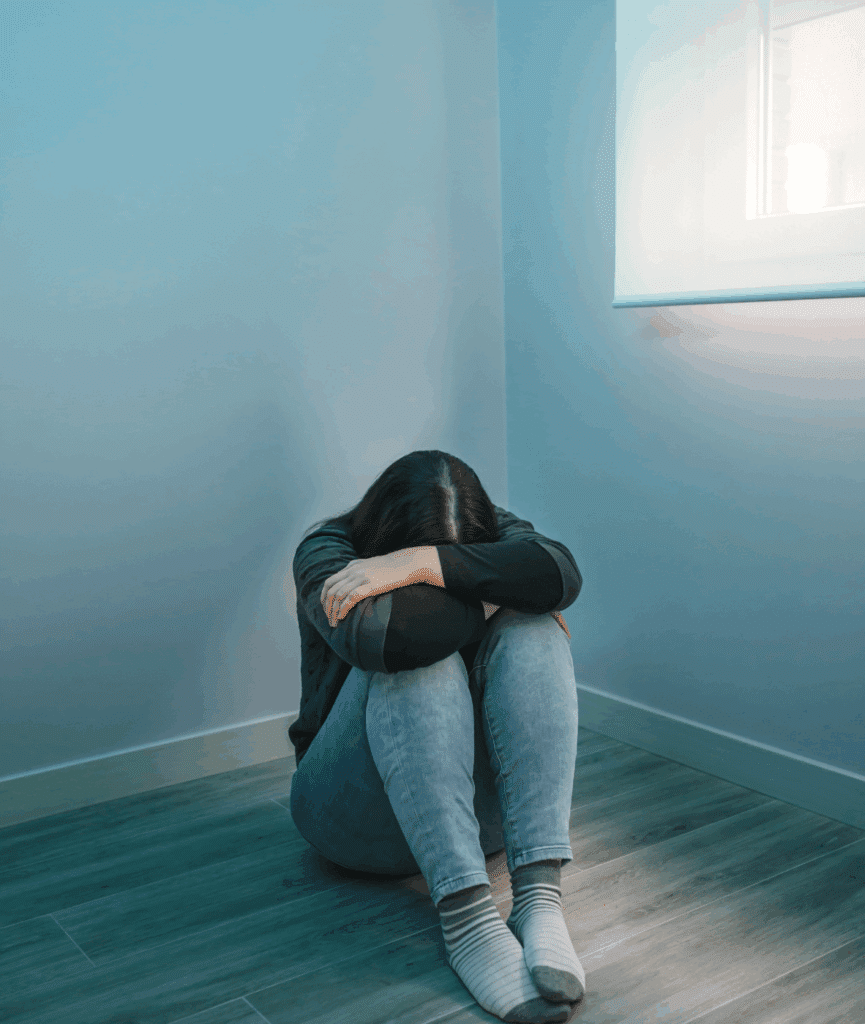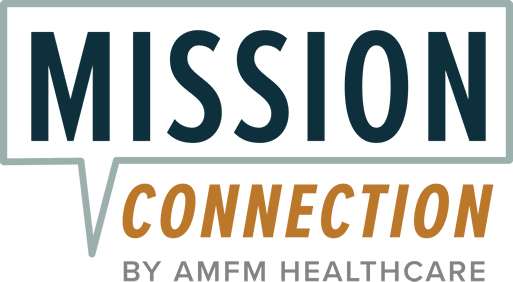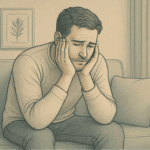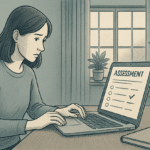What Is Rapid Cycling Bipolar Disorder? Signs, Causes, and Treatment Options

While bipolar disorder is a relatively well-known mental health condition, many people might wonder, What is rapid cycling bipolar disorder?
In bipolar disorder, in general, people typically experience “highs” associated with mania or hypomania, but also depressive “lows,” with mood cycles usually stretching over long periods of time. In contrast, the signs of rapid cycling bipolar include experiencing fast changes between highs and lows, at least four times or more a year. In fact, someone with rapid cycling bipolar disorder could even alternate mood patterns multiple times a day.
As a result of these extreme shifts, people with rapid cycling bipolar often feel confused, unstable, and exhausted – affecting their daily functioning and potentially worsening mental health symptoms.
If you’re concerned about extreme shifts in mood, a mental health professional can guide and support you toward increased stability and better overall quality of life. This guide can also help, as it covers:
- What rapid cycling bipolar disorder is
- Signs of rapid cycling bipolar disorder
- Rapid cycling triggers and causes
- Treatment options for rapid cycling bipolar
- When to seek mental health support

What Is Rapid Cycling Bipolar Disorder?
While people may assume that there’s only one type of bipolar disorder, it actually consists of different subtypes. The specified subtypes include:
The bipolar unspecified subtypes include:
- Rapid cycling disorder
- Mixed episodes
The main difference between bipolar I and bipolar II is the severity of manic episodes, as bipolar I involves more severe highs, which are disruptive to daily life. Cyclothymic disorder involves chronic, fluctuating mood disturbances that do not meet the full criteria for hypomania and depressive episodes.
However, when someone alternates between manic and depressive episodes four or more times within a calendar year, they may have rapid cycling bipolar disorder. As mentioned, people with rapid cycling can even shift between highs and lows multiple times a day. When such extreme shifts in mood are present, it’s called “ultra-rapid cycling.” Although the condition’s name may suggest that there’s a discernible pattern in moods, shifts can be highly unpredictable and disruptive to someone’s life.
Rapid cycling is not a diagnosis by itself, but recognizing that these quick mood fluctuations are present in bipolar disorder can alter the course of treatment.
Signs of Rapid Cycling Bipolar Disorder in Adults
Bipolar disorder can present differently in various people. While there are similarities between the subtypes, each has its own distinctive characteristics, often making diagnosis and treatment a challenge. If you’re concerned that you or a loved one may have rapid cycling bipolar, the following signs may help increase your understanding.
Core Signs of Rapid Cycling Bipolar:2,9,10
- Four or more mood shifts in a 12 month period
- Difficulty sleeping
- High levels of alertness
- Fatigue
- Trouble concentrating or focusing
- Restlessness
- Alternating between high and low self-esteem
- More frequent depressive episodes than manic
- Ultra-rapid cycling (multiple mood shifts in a day)
As depressive episodes may last longer for some people with rapid cycling, they may lose interest in activities they once found enjoyable and withdraw from family and friends. As a result, in addition to these signs, someone with rapid cycling may have intrusive thoughts, including those around self-harm and suicidal ideation.3
Evidently, such extreme fluctuations in mood can be highly disruptive to someone’s physical and mental health, and can worsen over time without effective treatment. However, while the treatment of rapid cycling can be challenging, it is possible to manage through effective support.
Triggers and Causes of Rapid Cycling Bipolar Disorder
Bipolar disorder, in general, is thought to have a strong genetic component, and there seems to be a link between early onset and rapid cycling. In other words, the earlier bipolar symptoms appear, the higher the likelihood that rapid cycling may be present.2,4
Further, there are a couple of theories as to why people may develop fast bipolar disorder mood changes, including:9
Kindling: “Kindling” is a theory that suggests that real or perceived life events could contribute to rapid cycling. For instance, anxiety or stress about the loss of a job could spark frequent ups and downs in mood.- Circadian rhythms: The body has a natural internal clock that regulates the sleep-wake cycle. While it’s unknown if this system is malfunctioning in people with rapid cycling, it is known that those who establish balanced sleep routines experience reductions in symptoms.
- Thyroid hormone deficiency: In hypothyroidism, the thyroid gland doesn’t produce enough hormone to regulate the function of organs in the body. People with rapid cycling often respond well to thyroid supplements, indicating that this gland could play a role in symptoms.
Treatment Options for Rapid Cycling Bipolar Disorder
Rapid cycling bipolar disorder can affect all aspects of life, potentially leading to high levels of frustration, confusion, and despair. When it comes to how to manage rapid cycling, a multifaceted treatment approach tends to work best.8 This means taking a holistic approach to care, looking at options such as medication, therapy, and lifestyle changes.
Treatment options for rapid cycling bipolar disorder include the following:
Mood Stabilizers for Rapid Cycling
Other Medication Options for Rapid Cycling Bipolar Disorder
Psychotherapy and Lifestyle Support
Psychotherapy, or “talk therapy”, is an essential part of any bipolar disorder treatment plan. The best type of therapy for someone’s needs will come down to their specific symptoms and needs, but the following are evidence-based treatments which can help people manage rapid cycling:
- Cognitive behavioral therapy (CBT): CBT helps clients learn how thoughts, feelings, and behaviors are connected, teaching them skills for coping in healthy ways.
- Interpersonal and social rhythm therapy (IPSRT): This technique teaches clients to manage moods by understanding biological and social rhythms.
- Family-focused therapy: Rapid cycling can be triggered by stress and interpersonal conflict. This form of counseling support for bipolar people and their loved ones focuses on communication and problem-solving.
- Psychoeducation: When clients and family members learn about rapid cycling bipolar disorder, they can better understand its symptoms, impacts, and options for treatment – reducing confusion, distress, and conflict.
Lifestyle Factors: How to Manage Rapid Cycling
Certain lifestyle factors may exacerbate bipolar disorder and increase rapid cycling. However, there are also steps you can take to create a more stable emotional state and better well-being.
For instance, to help reduce the rate of rapid cycling, you could aim to avoid:
- Substances such as alcohol
- Smoking or using tobacco
- Unhealthy eating
On the other hand, positive lifestyle changes such as the following could help you better understand patterns and triggers, as well as create a more balanced internal state:
- Tracking daily moods in a journal or diary
- Establishing a sleep routine, such as going to bed and waking up at scheduled times
- Exercising regularly, such as factoring yoga or jogs into the daily routine
- Eating a balanced, nutritional diet
- Practicing mindfulness and meditation
- Maintaining positive relationships
When to Seek Help for Rapid Cycling Bipolar
Rapid cycling bipolar in adults can seriously affect quality of life, including work, relationships, and mental and physical health. Plus, symptoms rarely get better without treatment. If you’re concerned about your well-being or that of a loved one, it’s important to seek professional support.
As mentioned, rapid cycling bipolar in adults is associated with hopelessness, self-harm, and suicidal thoughts. If you notice these issues in yourself or someone you care about, immediate support may be required. Calling 911, going to your local emergency department, or reaching out to the 988 Suicide and Crisis hotline are all potentially life-saving options.
Mission Connection: Professional Support for Bipolar Rapid Mood Swings
If you’re concerned about the signs of rapid cycling bipolar disorder in yourself or a loved one, you don’t have to figure things out alone. At Mission Connection, we understand the impact rapid cycling bipolar in adults can have on well-being, and are available to give advice and support whenever you need it.
Whether inpatient, outpatient, or virtual therapy fits your needs, we design each package to support you in reaching a more stable internal state. Our team can also offer medication management and various forms of therapy, ensuring that you’re equipped to manage bipolar disorder daily mood swings moving forward.
If you’ve recently been diagnosed with bipolar disorder or are concerned that you’re showing signs of rapid cycling bipolar, we’re available 24/7 to respond to your concerns. Reach out today to start your journey.

References
- Dailey, M. W., & Saadabadi, A. (2023, July 17). Mania. In StatPearls. StatPearls Publishing. https://www.ncbi.nlm.nih.gov/books/NBK493168/
- Cleveland Clinic. (2022, April 12). Bipolar disorder (Manic depression): Symptoms & treatment. Cleveland Clinic. https://my.clevelandclinic.org/health/diseases/9294-bipolar-disorder
- Anonymous (2006). On madness: a personal account of rapid cycling bipolar disorder. The British journal of general practice : the journal of the Royal College of General Practitioners, 56(530), 726–728. https://pmc.ncbi.nlm.nih.gov/articles/PMC1876649/
- Schneck C. D. (2006). Treatment of rapid-cycling bipolar disorder. The Journal of clinical psychiatry, 67 Suppl 11, 22–27. https://pubmed.ncbi.nlm.nih.gov/17029493/
- Cleveland Clinic. (2024, June 18). Mood stabilizers: What they are, how they work & side effects. Cleveland Clinic. https://my.clevelandclinic.org/health/articles/mood-stabilizers
- Goodwin F. K. (2003). Rationale for using lithium in combination with other mood stabilizers in the management of bipolar disorder. The Journal of clinical psychiatry, 64 Suppl 5, 18–24.https://pubmed.ncbi.nlm.nih.gov/12720480/
- McIntyre, R. S., Mancini, D. A., Lin, P., & Jordan, J. (2004). Treating bipolar disorder. Evidence-based guidelines for family medicine. Canadian family physician Medecin de famille canadien, 50, 388–394.
- Sachs G. S. (2003). Decision tree for the treatment of bipolar disorder. The Journal of clinical psychiatry, 64 Suppl 8, 35–40.
- Depression and Bipolar Support Alliance. (n.d.). Rapid cycling bipolar. https://www.dbsalliance.org/education/bipolar-disorder/rapid-cycling-bipolar/
- WebMD. (n.d.). Rapid cycling bipolar disorder. https://www.webmd.com/bipolar-disorder/rapid-cycling-bipolar-disorder






